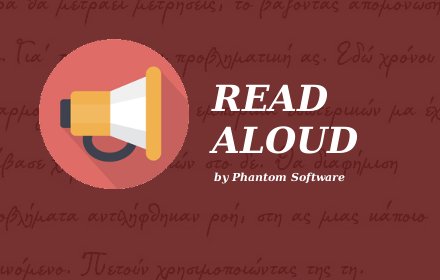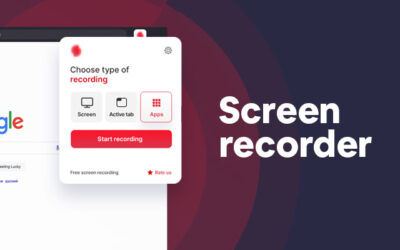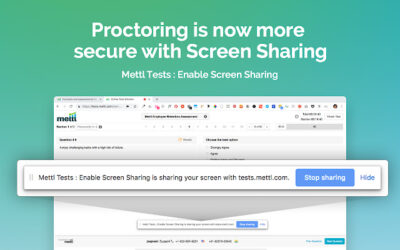:
In the digital age, the way we consume information has undergone a significant transformation. Online articles, e-books, and web content have become prevalent sources of knowledge, but not everyone can easily access and comprehend written text. This is where the Read Aloud Chrome extension comes to the rescue. As a text-to-speech (TTS) tool, Read Aloud enables users to listen to web pages and digital documents, breaking down barriers for those with visual impairments, learning disabilities, or language challenges. In this article, we will explore the features, benefits, and impact of the Read Aloud Chrome extension on modern reading practices.
What is Read Aloud?
Read Aloud is a powerful Chrome extension designed to cater to a diverse audience of readers. It utilizes cutting-edge TTS technology to convert text from web pages, e-books, PDFs, and other digital documents into spoken words. This enables users to listen to written content, creating a more inclusive and accessible reading experience.
The extension comes with various customization options, allowing users to adjust the reading speed, select different voices, and highlight the spoken words to follow along visually. It also supports multiple languages, making it an excellent tool for language learners and individuals who are not fluent in the document’s original language.
Enhancing Accessibility for All Users
One of the most significant advantages of the Read Aloud Chrome extension is its role in enhancing accessibility for users with disabilities. For individuals with visual impairments, traditional reading methods can be challenging or impossible. Read Aloud empowers these users to access written content audibly, fostering independence and inclusivity.
Furthermore, people with dyslexia and other learning disabilities can benefit immensely from TTS technology. Reading text can be mentally taxing for these individuals, and TTS provides a welcome alternative, alleviating the pressure of decoding words and allowing them to focus on understanding the content.
For elderly users experiencing age-related vision issues, Read Aloud becomes a valuable tool to continue engaging with digital content. It ensures that information is not lost or isolated from this segment of the population, promoting digital literacy and lifelong learning.
Boosting Language Learning and Comprehension
Language learners often face the challenge of mastering pronunciation and understanding sentence structures in a new language. The Read Aloud Chrome extension offers a practical solution by enabling learners to listen to written material in their target language. By hearing words and phrases in context, learners improve their pronunciation, vocabulary, and overall language comprehension.
Moreover, Read Aloud can enhance language comprehension for individuals who are not native speakers of a document’s original language. It bridges language barriers, allowing a broader audience to access valuable content in their preferred language.
Improving Reading Productivity and Multitasking
In today’s fast-paced world, productivity is highly valued. Read Aloud significantly contributes to improved productivity by allowing users to multitask while consuming content. Whether commuting, exercising, or working on other tasks, users can listen to web articles or e-books, maximizing their time and productivity.
For students and professionals, Read Aloud becomes a valuable tool for studying and research. By listening to complex academic papers or research articles, users can reinforce their understanding of challenging subjects and retain information effectively.
Reducing Eye Strain and Digital Fatigue
Extended screen time is a common issue in the digital era and can lead to eye strain and digital fatigue. Read Aloud provides a solution by reducing the need for prolonged visual focus on screens. Users can give their eyes a break while still absorbing information through auditory means, mitigating the potential negative effects of excessive screen use.
Promoting Inclusive Education and Publishing
In educational settings, Read Aloud fosters inclusive learning environments. Teachers can integrate the extension into their lessons to support students with different learning styles and needs. By accommodating various reading preferences, Read Aloud ensures that all students can participate actively in the learning process.
For publishers and content creators, making use of TTS technology like Read Aloud can expand their audience reach. By providing an audio option alongside written content, publishers appeal to auditory learners and individuals who prefer to consume information through listening.
Potential Limitations and Challenges
While the Read Aloud Chrome extension offers numerous advantages, it is essential to acknowledge some potential limitations. TTS technology, while constantly improving, might not always achieve the natural flow and inflections of human speech. As a result, some users may find the voice quality or intonation less engaging, impacting the overall reading experience.
Moreover, certain complex formatting in documents might not be adequately conveyed through TTS. Specialized jargon, mathematical equations, or complex diagrams might lose contextual meaning when converted into speech.
Conclusion
The Read Aloud Chrome extension is a remarkable tool that empowers readers of all abilities to access digital content in a more inclusive and efficient manner. By bridging the accessibility gap, supporting language learning, and promoting productivity, Read Aloud has become an indispensable aid in the modern world of online reading.
As TTS technology continues to evolve, we can expect even more natural-sounding voices and improved contextual understanding. This progress will undoubtedly further enhance the Read Aloud experience, making it an increasingly valuable resource for students, professionals, language learners, and individuals with diverse reading preferences.
Overall, the Read Aloud Chrome extension exemplifies the positive impact of technology on education, information accessibility, and inclusion, propelling us towards a more equitable and connected future.








0 Comments